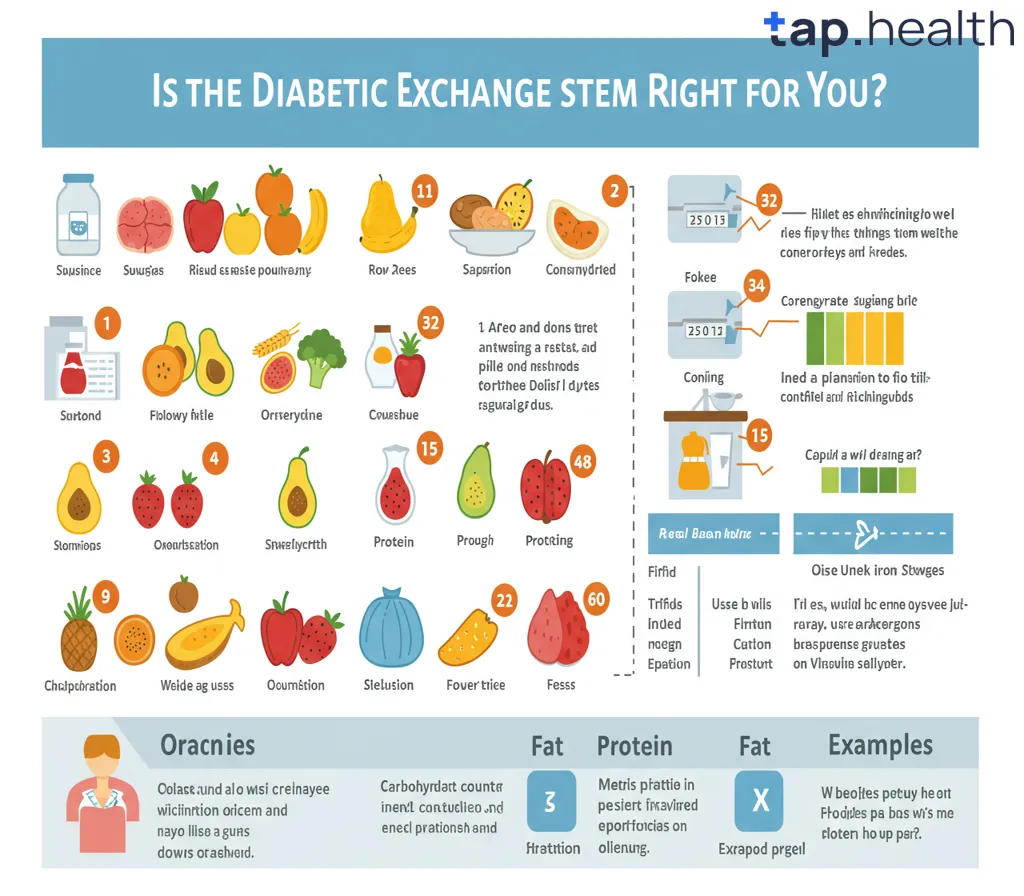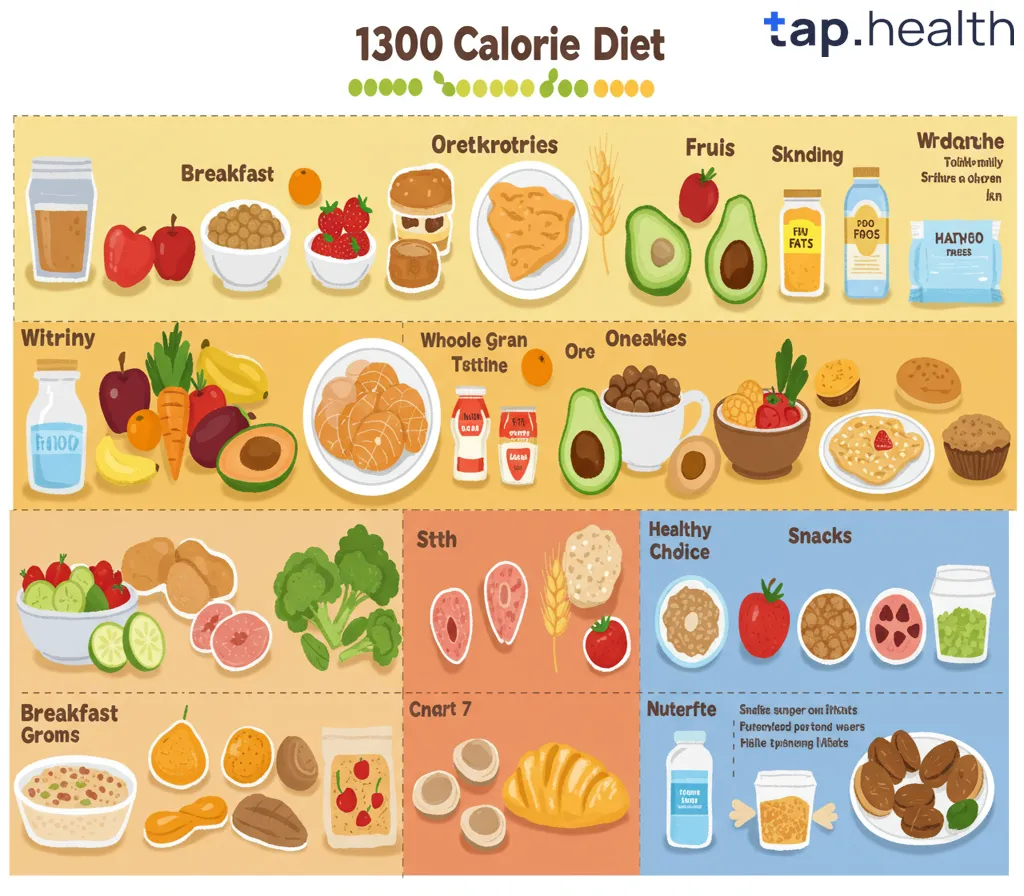Living with diabetes can feel overwhelming. You’ve got to watch your food, check your blood sugar, and stay healthy—all at the same time. But what if there was an easier way to plan your meals? That’s where the diabetic exchange system comes in. If you’re asking, “What is a diabetic exchange?” you’ve landed in the right spot. This guide will explain it all in simple terms, so you can take charge of your diet and feel good about your choices. Let’s get started!
Understanding Diabetic Exchanges
A diabetic exchange is a simple tool to help people with diabetes plan their meals. It groups foods that have about the same amount of calories, carbohydrates, protein, and fat. This way, you can swap one food for another in the same group without messing up your meal plan. It’s like having a food swap cheat sheet!
What Is the Exchange System?
The exchange system was created to make eating with diabetes less stressful. Instead of counting every single carb or calorie, you use “exchanges.” Each exchange is a set portion of food—like one slice of bread or one small apple—that has a similar nutritional value to other foods in its group. The idea is to keep your blood sugar steady while still enjoying a variety of foods.
According to the American Diabetes Association (ADA), this system has been around since the 1950s and is still a trusted way to manage diabetes. It’s all about balance and flexibility.
Food Groups in the Exchange System
The exchange system splits foods into six main groups. Each group has its own rules for portion sizes and nutrients. Here’s a quick rundown:
- Starches: Bread, rice, pasta, and starchy veggies like potatoes. One exchange = 15 grams of carbs, 3 grams of protein, 80 calories.
- Fruits: Apples, bananas, berries. One exchange = 15 grams of carbs, 60 calories.
- Vegetables: Non-starchy ones like spinach or broccoli. One exchange = 5 grams of carbs, 25 calories (½ cup cooked or 1 cup raw).
- Milk: Milk, yogurt, soy milk. One exchange = 12 grams of carbs, calories vary (e.g., 90 for skim milk).
- Meat and Meat Substitutes: Chicken, fish, tofu. One exchange = 7 grams of protein, calories depend on fat content.
- Fats: Oil, butter, nuts. One exchange = 5 grams of fat, 45 calories.
There’s also a “free foods” category—things like spices or sugar-free drinks you can enjoy without counting.
How Diabetic Exchanges Work
Think of the exchange system like building blocks for your meals. You stack them together based on what your body needs each day. Here’s how it works in real life.
Portion Sizes and Exchanges
Every exchange has a specific portion size. For example, one starch exchange could be:
- 1 slice of bread
- ½ cup cooked pasta
- 1 small potato
These all have about 15 grams of carbs, so they’re equal in the system. Measuring your food keeps everything on track. Over time, you’ll get good at guessing portions, but starting with a measuring cup or scale helps.
Planning Meals with Exchanges
Your doctor or dietitian gives you a daily exchange plan—like 6 starches, 3 fruits, and so on. You spread these out over meals and snacks. For breakfast, you might pick:
- 2 starch exchanges (2 slices of toast)
- 1 fruit exchange (1 small orange)
- 1 milk exchange (1 cup skim milk)
This keeps your nutrients balanced and your blood sugar from spiking.
Benefits of Using Diabetic Exchanges
Why use exchanges instead of just counting carbs? Here are some big wins.
Better Blood Sugar Control
Exchanges help you spread carbs evenly throughout the day. This stops those wild blood sugar ups and downs. The Mayo Clinic says consistent carb intake is key for diabetes management, and exchanges make it simple.
Flexibility in Diet
Tired of toast? Swap it for rice or a bagel! As long as it’s the same exchange, you’re golden. This keeps your meals fun and fresh.
Easier Meal Planning
No need to stress over nutrition labels. Exchanges give you a quick way to build a balanced plate—perfect for busy days or eating out.
Getting Started with Diabetic Exchanges
Ready to try it? Here’s how to jump in.
Tips for Beginners
- Talk to an Expert: A dietitian can set up your exchange plan based on your needs.
- Learn the Lists: Grab an exchange list from the ADA or your doctor and study the portion sizes.
- Start Small: Try planning just one meal a day, like lunch, before doing all three.
Common Mistakes to Avoid
- Guessing Portions: Eyeballing can throw you off. Measure until you’re sure.
- Skipping Groups: Don’t forget fats or snacks—they count too!
- Getting Bored: Mix up your foods to keep it interesting.
Who Can Use the Diabetic Exchange System?
This system isn’t just for one type of diabetes—it’s for lots of people!
People with Type 1 Diabetes
If you take insulin, exchanges help you match your carbs to your doses. It’s a structured way to stay on top of things.
People with Type 2 Diabetes
For type 2, exchanges can help with weight loss and blood sugar control. It’s a practical tool for everyday eating.
Other Users
Got gestational diabetes? Or just want to eat healthier? The exchange system works for portion control and balance, no matter your goals.
How Does the Exchange System Compare to Other Methods?
There are other ways to manage diabetes—like carb counting or the plate method. How does the exchange system stack up?
Exchanges vs. Carb Counting
Carb counting focuses only on carbs, great for precise insulin dosing. Exchanges look at all nutrients, making them easier for beginners.
Exchanges vs. Plate Method
The plate method divides your plate into sections (half veggies, a quarter protein, a quarter starch). It’s quick but less flexible than exchanges.
Can You Use Diabetic Exchanges for Weight Loss?
Yes! Exchanges control portions and calories, so they’re great for shedding pounds. A dietitian might cut your starch exchanges and boost veggies to lower calories while keeping you full.
What Are Some Examples of Diabetic Exchanges?
Let’s break it down with real foods.
Starch Examples
- 1 slice whole wheat bread
- ½ cup mashed potatoes
- ¾ cup unsweetened cereal
Fruit Examples
- 1 small peach
- ½ cup grapes
- 2 tablespoons raisins
Vegetable Examples
- 1 cup raw carrots
- ½ cup cooked green beans
- 1 cup salad greens
How Do You Adjust Exchanges for Special Occasions?
Parties and holidays don’t have to ruin your plan.
Tips for Eating Out
- Check menus online to pick exchange-friendly options.
- Go for grilled meats (meat exchanges) and steamed veggies (vegetable exchanges).
- Skip extras like fries unless they fit your starch count.
Handling Treats
Love dessert? A small piece of cake might count as 2 starch exchanges. Plan ahead and adjust your day.
Where Can You Find Diabetic Exchange Lists?
Need a list? Try these:
- American Diabetes Association: Free downloads online.
- WebMD: Simple guides to get you started.
- Your Doctor: They’ll give you one tailored to you.
What Tools Help with Diabetic Exchanges?
Tracking exchanges is easy with the right help.
Apps and Resources
- MyFitnessPal: Add exchanges to your log.
- ADA’s Diabetes Food Hub: Meal ideas with exchange counts.
- Notebook: Old-school works too—just write it down!
Can You Combine Exchanges with Other Diets?
Totally! Exchanges play nice with other plans.
Low-Carb Diets
Cut starch and fruit exchanges, load up on veggies and proteins.
Vegetarian Diets
Swap meat for tofu or beans in the meat group.
What Are the Downsides of the Exchange System?
It’s not perfect. Here’s what to watch for.
Limitations
- Takes Time to Learn: Memorizing groups and sizes isn’t instant.
- Not Exact: Exchanges are averages, so carbs might vary a bit.
- Ignores Glycemic Index: Some foods hit blood sugar harder than others in the same group.
How Has the Exchange System Changed Over Time?
The system started in the 1950s with the ADA and has grown with new foods and science. It’s still a solid choice today, even with newer methods around.
Is the Diabetic Exchange System Right for You?
It depends! If you like structure, simplicity, and variety, it’s a great fit. Not sure? Ask your dietitian if it matches your lifestyle.
FAQ: Your Questions About Diabetic Exchanges Answered
What is a diabetic exchange list?
It’s a chart showing foods grouped by their nutrients, with portion sizes for easy swapping.
How many exchanges should I have daily?
It varies by person—your dietitian will set it based on your health and goals.
Can I use exchanges with type 2 diabetes?
Yes, it’s awesome for type 2, helping with blood sugar and weight.
Do I need to count calories too?
Nope! Exchanges handle calories through portion sizes.
Can I eat sweets?
Sometimes, if you count them as starch or fruit exchanges. Keep it rare, though.
How do I use exchanges when eating out?
Estimate portions and pick foods that match your groups—like grilled fish or a side salad.
Is the exchange system old-fashioned?
Not at all! It’s still useful, even if carb counting is trendier now.
Does it work with insulin?
Yes, but you might tweak your doses with your doctor’s help.
What’s the easiest way to learn exchanges?
Start with a list, practice with one meal, and ask a dietitian for tips.
Can kids use the exchange system?
Sure, with a plan made for their growing bodies—check with a pro.
Wrapping It Up
The diabetic exchange system is a practical, flexible way to manage your meals and blood sugar. It’s all about making healthy eating simple—no fancy math required. Whether you’re new to diabetes or just want a better system, exchanges can help you feel confident and in control. Chat with your healthcare team to see if it’s right for you, and start building meals that work for your life. Here’s to tasty, stress-free eating!



